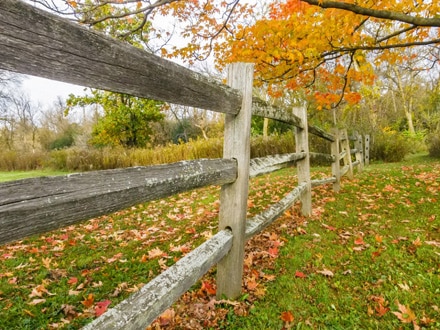Over the past few months, our lawns have been lush and green. However, several important tasks are necessary to keep our lawns in optimal condition.
Lawn grasses are divided into two categories: warm season and cold season. Warm season grasses include bermudagrass, centipedegrass, zoysiagrass and St. Augustinegrass. Their growth rate decreases as the weather becomes colder. They begin turning brown as they go dormant for the winter. Cool season grasses, which include tall fescue, the most common type grown in our climate, stays green all winter.
For the warm season grasses, they should not receive any high nitrogen fertilizer. Applying it will delay the grass from becoming dormant and make it more susceptible to freeze damage. Additionally, the grass will not absorb most of the fertilizer, and the rains can wash it off site into storm drains which lead to water bodies, such as creeks, rivers, and lakes. The fertilizer can harm aquatic organisms and decrease water quality.
Many lawns are plagued with winter weeds such as chickweed, henbit and annual bluegrass (Poa annua). The best way to control them is to apply a pre-emergent herbicide in September into early October. It will kill the weeds as they emerge from the seed. The chemicals will not stop every weed from germinating, but will drastically reduce the amount. Once they have emerged, a post-emergent herbicide will have to be used. One labeled for broadleaf weed control will take care of weed such as henbit and chickweed; however, annual bluegrass is difficult to control, and there are not any herbicides available to the homeowner.
The fall and early spring is when tall fescuegrass is most actively growing. Unlike the warm season grasses, tall fescuegrass can be fertilized. Frequently, the grass suffers from the summer heat, and patches of it will die. The lawns can be overseeded with grass seed at the rate of five to seven pounds per, 1000 square feet. Mow the lawn before the seed is applied and wait a couple of weeks to allow for them to germinate and begin to grow. Make sure the soil is kept evenly moist as the seed becomes established. One word of caution: you cannot apply a pre-emergent herbicide to the lawn since the chemical will prevent the grass seed from emerging just like the weed seeds. It does not differentiate between the two.
Sometimes fescue lawns are aerated with a hollow tine aerator in the fall, and if you have not had yours done in a few years, consider doing so. Often the grass is aerated in conjunction with overseeding. Make sure the ground has been softened by watering it. Otherwise, the soil will be as hard as concrete and next to impossible to aerate.
Irrigation can be reduced on the warm season grasses as the weather gets cooler. For tall fescue, it will need to continue to receive adequate amounts of water during its period of active growth. In November, warm season grass should not be watered and tall fescue only occasionally. After that, the winter rainfall will provide the necessary amount of water.
Fall is the transition from summer into winter. It is not the time to stop maintaining your lawn. By accomplishing certain tasks during this time, will help ensure you have an attractive and healthy lawn.
Timothy Daly, is an Agricultural and Natural Resource Extension Agent with Gwinnett County. He can be contacted at 678-377-4010 or tdaly@uga.edu


